Ultra-distance event is traditionally defined as any event which consists of longer than the common standard long distance race for such sport (i.e., over Ironman distance in triathlons, or over marathon distance in running). Ultra events are also not purely based on the distance criteria. There are certain events that also considered ultras due to the terrain, weather, and other conditions that greatly increase difficulty and finishing factor. Multisport stage events and multi-day adventure races would also fall under our definition of an ultra event. One-off individual efforts or once-in-a-while events also deserve a mention here. While the types of ultras may vary from running, cycling, multisport to snoeshoe, skating, sailing, paddling, climbing, and so on, we listed ultra events under six categories below:
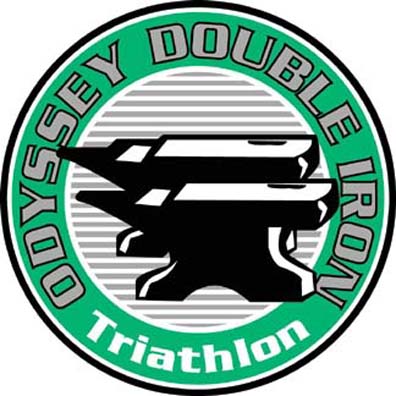
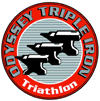 |
Odyssey Double and Triple Iron - double and triple ironman distance events in the US organized by Odyssey Adventure Racing |
 |
Le Defi Mondial de l'Endurance or "The World Endurance Challenge" is a triple ironman distance event held in Le Fontanil (near Grenoble), France. Double ironman distance is being held also sometimes. |
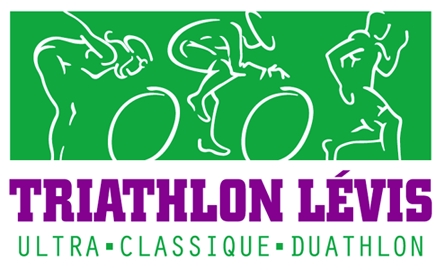 |
Ultratriathlon Levis - double ironman distance race in Levis, Quebec, Canada. Held for the first time on July 21, 2000. 7.6km swim in St. Lawrence River, 360km bike on closed to traffic city streets circuit (164 laps of 2.16km), and 84.4km run on closed streets (38 laps of 2.2km). Individuals and teams allowed; prize money to the top 5 male/female winners and to the top teams. |
 |
Lensahn Triathlon - triple ironman distance event in Germany |
 |
DecaTriathlon Mexico - deca (10 times) ironman distance race in Mexico |
For more event listings please go to Events Links.

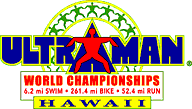 |
Ultraman World Championships Hawaii - a 3-day stage triathlon circumnavigating the Big Island of Hawaii. Day 1 is 10km (6.2mi) ocean swim from Konas's Kailua Pier to Keauhou Bay, followed by a 90-mile bike (with 4000 feet climb at Volcanoes National Park). Day 2 is 171.4-mile bike from Volcanoes NP to Hawi. Last day is a double marathon run (52.4mi) along the Ironman Hawaii bike course. Founded in 1983 by Curtis Tyler, Alex Smith and Conrad Will, event was held each year since 1983 except 1987. Since 1992, Don Ryder and Jane Bockus are Race Directors. Field is limited to 35 competitors. Support crews are required. There is also a Canadian version of this event. |
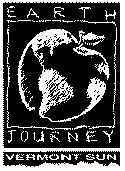 |
Earth Journey Vermont - 3-day event (Day 1: 5.5 mile swim or 13 mile paddle, Day 2: 168 mile bike, Day 3: 51.25 mile run). |
For more event listings please go to Events Links.

Ultramarathons are run on roads, trails and running tracks. They can be point-to-point, out and back, or loop courses. The most typical distances are 50 kilometers, 50 miles, 100 kilometers, 150 kilometers, 100 miles, 24 hours, 200 kilometers, 48 hours, 200 miles, 6 days, 1,000 kilometers and 1,000 miles. In addition to these fixed distance events there are those in which runners attempt to cover the greatest possible distance within a fixed period of time (24 hours, 48 hours or 6 days).
Runners may take walking breaks, pause to drink or eat, and even sleep if the events are especially long. No penalty results from any such stops, except for the time or distance a runner loses from his or her performance.
Ultramarathon racing is much older than the marathon (which originated with the first modern Olympics in 1896) but only recently has the sport has been recognized by the International Amateur Athletic Federation (IAAF). In 1991, the IAAF extended official recognition to the 100-kilometer event. Since that time the 100-kilometer has replaced the marathon as the longest running distance recognized by the world athletics governing body.
| Comrades Marathon - one the most famous ultramarathons in the world. It was established in 1921 by Vic Clapham in conjunction with the League of Comrades of the Great War. Since the 1980's more than 10,000 runners have participated each year. The Comrades covers 88km to 92km of hilly and challenging roads between Durban and Pietermaritzburg, South Africa. | |

|
Marathon des Sables - stage event in the desert terrain of the North Africa. |
| The Spartathlon - classic event in Greece. Also during the inaugural run in 1983 was the venue for the shocking emergence of Yiannis Kouros, an unknown young Greek running his first ultramarathon who demolished a world-class international field by winning in over 3 hours. In the subsequent decade and a half since then, Kouros has gone on to rewrite the world record books at every ultra event from 100 miles through 1,000 miles. Almost everyone came back from Greece suspecting that he had cheated. Half a year later, Edgar Patterman organized a 3-day, 200-mile stage race along the Danube in Austria. He specifically invited Kouros in order to test him. Some of the same international stars were in attendance (such as Dusan Mravlje of Yugoslavia, the favorite). With race officials and spectators watching virtually every step of the way, Kouros took off, left the field behind early, and even beat some of the official crews to some of the pre-set aid stations, averaging sub-7 minute miles for the first two days. Then, on the third day, he took it easy and ran the final stage with Mravlje. Three months later Kouros came to New York City to face an even more stellar field in the New York 6-day race. That's where he ran 635 miles to bridge the century-old gap between the modern and the 19th century 6-day performers by breaking George Littlewood's all-time best of 623 miles. In that race he broke 12 hours for the first 100 miles, ran about 165 miles for the first 24 hours, broke the 48 hour world record, hitting 266 miles at that point, and then just kept going. As indication of his long distance speed, Kouros' 24-hour track world record is 188-plus miles, which is about 7:40 per mile. | |
| London to Brighton - another classic in UK | |
| Western States - is the oldest and largest 100-mile trail run in the US | |
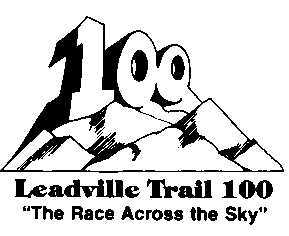 |
Leadville 100-Miler - 50 miles out and back on the forest trail and mountain roads in the midst of the breathtaking Colorado Rockies. Lowest point 9,200 feet, the highest point: Hope Pass at 12,600 feet. |
For more event listings please go to Events Links.

Non-competitive (officially) long-distance riding has a name, randonneuring. In such events, athletes' goal is to finish within the time limits (but finishing times get recorded). Randonneur events traditionally start at 200km (125mi), and include 300km (190mi), 400km (250mi), 600km (375mi), 1,000km (625mi), and 1,200km (750mi). Any such event is called a randonne. Most common types includes a brevet and a flehe. In brevet, cyclist receives a certificate, authenticating completetion of a particular distance. Flehe is a 24-hour ride (of at least 360km) riden as a team.
 |
Race Across America (RAAM) |
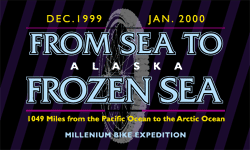 |
Sea to Sea - Iditasport event, a 1,085 mile bike race from Homer, Alaska to Prudhoe Bay. From the Pacific Ocean to the Arctic Ocean! |
| Furnace Creek 508 - 508 mile race held annually in October in Death Valley and the Mojave Desert since 1990 (it dates back to 1983 under the directorship of John Marino, founder of the Race Across America). Solo, tandem, and relay divisions are offered in this race. | |
| Boston-Montreal-Boston: The American Randonnee - 750 miles of challenging day-and-night cycling on country roads of New England for experienced endurance cyclists. It's run every year except when Paris-Brest-Paris is run (PBP is run once every 4 years, with the next is scheduled for 2003). Website also contains information on The Boston Brevets - a series of long distance cycling events which are also training and qualifying rides for other randonneuring events such as BMB and PBP. The series is made up of 4 traditional brevets: 200km (125 miles), 300km (190 miles), 400km (250 miles), and 600km (375 miles). |
For more event listings please go to Events Links.

| Manhattan Island Federation - organizers of the Swim Around the Manhattan (28.5 mile) and other swimming races around New York City |
For more event listings please go to Events Links.

Adventure races consist of multiple disciplines, including running, biking, paddling, climbing, horse-back riding, and many other non-motorized forms of locomotion. Navigation and endurance are the most important factors. Generally, races are held between 5-person or smaller teams, mixed- or single gender, or solo divisions. There are four types of adventure events emerging now: expedition, stage, short and sprint events.
Expedition events typically raced over hundreds of miles of remote wilderness with 5 person co-ed teams. Teams race without significant rest stops and/or overnight stopping. These are the most challenging adventure racing events, such as The Beast, Raid Gauloises, Eco-Challenge, Southern Traverse, and Elf Authentic Adventure.
Stage events are usually 7-day or less in duration, and structured to allow overnight rest between the stages. These races usually are much faster than expeditions, due to the ability to recuperate between the stages. Events include the Mild Seven Outdoor Quest, Western Isles Challenge, and Sea-to-Summit.
Short events are typically weekend races, as the Salomon X-Mountain, Mountain Rage, California Eco Adventure and Endorphin Fix series.
Sprint events are 2-hour to day long fast races with less demanding skill sets. Examples include the Hi-Tec Adventure Race Series, Subaru Adventure Racing Canada series and Tsali Challenge.
| Beast of the East - and other events by Odyssey Adventure Racing | |
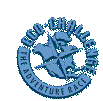 |
Eco-Challenge |
 |
Elf Athentic Adventure - organized by legendary Gérard Fusil with support of Elf Aquitaine. After creating the Raid Gauloises, Fusil went on to design Elf Authentic Adventures. |
 |
Raid Gauloises |
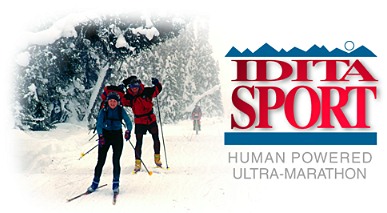 |
Iditasport Ultra Race - is a part of Iditasport family of extreme endurance races in Alaska. It is a human-powered ultra with 4 different divisions: ski, bike, foot, and snowshoe. |
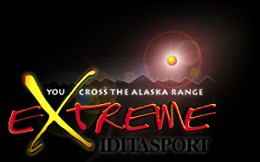 |
Editasport Extreme - 350 mile race over the Alaska Range. Solo and team divisions. |
For more event listings please go to Events Links.

| The Birkebeiner Rennet - classic cross-country skiing race |
| The Birkebeiner Wisconsin - crosscountry skiing race in the US |
For more event listings please go to Events Links.
